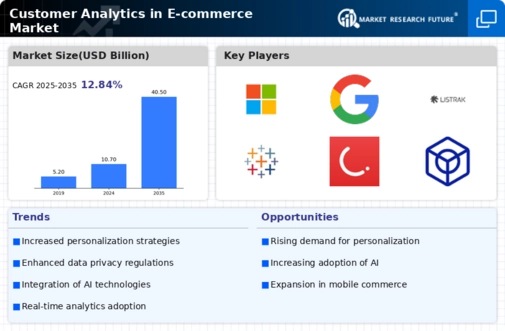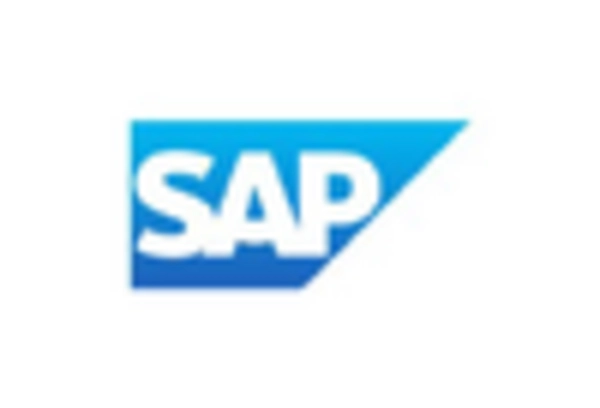Rise of Omnichannel Retailing
The rise of omnichannel retailing significantly influences the customer analytics in e-commerce Market. As consumers engage with brands across multiple platforms, the ability to track and analyze customer interactions becomes essential. Research indicates that businesses employing omnichannel strategies achieve a 30% higher customer lifetime value. This trend underscores the necessity for comprehensive customer analytics to provide a seamless shopping experience. By integrating data from various channels, e-commerce companies can gain a holistic view of customer preferences and behaviors. Consequently, this integration fosters improved marketing strategies and enhances customer loyalty, positioning businesses for sustained growth in a competitive landscape.
Advancements in Technology and Tools
Advancements in technology and tools are transforming the Customer Analytics in E-commerce Market. The proliferation of sophisticated analytics platforms enables businesses to collect, analyze, and interpret vast amounts of customer data with unprecedented efficiency. For instance, the adoption of cloud-based analytics solutions has surged, with a reported 40% increase in usage among e-commerce firms. These technological innovations facilitate real-time data processing, allowing companies to respond swiftly to changing consumer behaviors. As a result, businesses can tailor their offerings and marketing efforts more effectively, thereby enhancing customer satisfaction and driving sales. The ongoing evolution of analytics tools is likely to further empower e-commerce companies in their quest for deeper customer insights.
Increased Focus on Customer Experience
An increased focus on customer experience is a critical driver in the Customer Analytics in E-commerce Market. Companies are recognizing that exceptional customer experiences lead to higher satisfaction and loyalty. Data suggests that 86% of buyers are willing to pay more for a better customer experience. This realization has prompted e-commerce businesses to invest in customer analytics to understand pain points and preferences. By analyzing customer feedback and behavior, companies can refine their offerings and create personalized experiences. This emphasis on customer-centric strategies is likely to continue shaping the industry, as businesses strive to differentiate themselves in a crowded marketplace.
Regulatory Compliance and Data Privacy
Regulatory compliance and data privacy concerns are increasingly shaping the Customer Analytics in E-commerce Market. With the implementation of stringent data protection regulations, businesses must navigate complex legal landscapes while leveraging customer data. Compliance with regulations such as the General Data Protection Regulation (GDPR) has become paramount, as non-compliance can result in hefty fines. This environment necessitates robust customer analytics frameworks that prioritize data security and ethical usage. Companies that successfully balance compliance with effective data utilization are likely to gain a competitive edge. As consumer awareness of data privacy grows, businesses must adapt their analytics strategies to foster trust and transparency.
Growing Demand for Data-Driven Insights
The increasing demand for data-driven insights is a pivotal driver in the Customer Analytics in E-commerce Market. Businesses are increasingly recognizing the value of leveraging customer data to inform strategic decisions. According to recent statistics, companies utilizing customer analytics report a 15% increase in customer retention rates. This trend suggests that organizations are prioritizing data analytics to enhance customer engagement and satisfaction. As e-commerce continues to expand, the need for actionable insights derived from customer behavior becomes paramount. This shift towards data-centric strategies is likely to shape the future of the industry, as companies strive to remain competitive by understanding their customers better.


















Leave a Comment